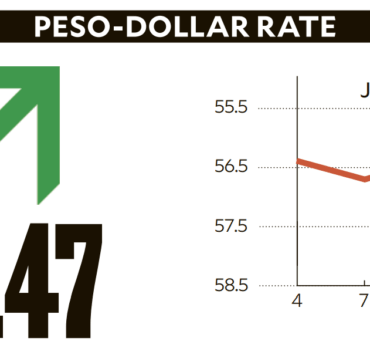Companies that invest in marketing during downturns often emerge stronger

The marketing industry is in flux: globally, businesses are tightening belts amid economic disruptions, but also continuing to double down on digital transformation efforts and investments in artificial intelligence (AI), according to a new study by global research firm Nielsen.
Such a situation is influencing three critical trends: Marketers are now “rolling with the punches” by adapting spending strategies and exploring new channels; “finding the sweet spot” between brand building and performance marketing; and are “seeing things clearly” through improved measurement of cross-media campaigns.
According to Nielsen’s latest Annual Marketing Report, which surveyed 1,400 marketing professionals worldwide between February and March 2025, over half of global marketers (54 percent) are planning to reduce advertising spending this year across industries and regions.
The travel and tourism sector leads the cuts at 70 percent, followed by technology companies at 60 percent.
“It’s difficult to make long-term marketing plans when you don’t know if you’ll have products on the shelf in the coming months, and at a price consumers can afford,” the report states, citing ongoing global supply chain tensions and challenging economic conditions.
European marketers, for one, face sluggish local economies and ongoing conflict impact, while US financial firms grapple with dropping consumer confidence and housing market challenges.
Different industries are charting distinct paths through the economic uncertainty. Retail brands are shifting more aggressively to digital channels, while technology and financial services companies focus heavily on performance marketing.
Health-care and pharmaceutical companies remain attached to traditional channels, like linear TV and direct mail, which provide the space needed for complex messaging and regulatory compliance. Their target audiences skew older, making traditional media more effective for reach.
Significant rebalancing
Despite these budget constraints, the advertising landscape is witnessing a significant rebalancing between digital and traditional media. While digital channels continue to attract investment, the rate of growth has slowed compared with 2024.
Social media remains the top choice for major budget increases, with 29 percent of marketers planning spending boosts of over 50 percent—though this represents a four-point decrease from the previous year.
Display advertising, online video and search engine marketing round out the top digital priorities.
Surprisingly, traditional media is showing signs of resilience. Out-of-home advertising saw a notable uptick, with 16 percent of marketers planning increases of over 50 percent, up three points from 2024.
“Don’t count out traditional channels quite yet,” the report emphasizes, noting that 44 percent of global marketers now plan a balanced 40-60 percent split between digital and traditional advertising—the largest group among survey respondents.
Connected TV (CTV) and over-the-top (OTT) streaming platforms are emerging as clear winners in the media mix evolution. Globally, 56 percent of marketers plan to increase streaming advertising spend in 2025, up from 53 percent in 2024.
The growth is particularly pronounced in the Americas, where streaming now accounts for 42 percent of ad-supported viewing time in the US. With the country’s streaming advertising revenues expected to reach over $17 billion this year—a 25 percent increase—the platform offers advertisers improved reach and targeting capabilities while remaining less susceptible to economic disruptions like tariffs.
Retail media networks (RMNs) are rapidly evolving beyond their origins as bottom-funnel conversion tools. Two-thirds of marketers (65 percent) see RMNs playing a growing role in their media strategy, with adoption highest in North America at 74 percent.
The platforms are no longer limited to traditional retailers like Amazon and Walmart. Travel companies, financial services and ride-sharing apps are capitalizing on their first-party data to offer advertising partners new ways to reach unique audiences across the entire consumer journey.
AI hogging the spotlight
Still the rising star across industries, AI dominates marketers’ attention as the trend most likely to impact campaign management. Companies with budgets exceeding $1 billion are particularly focused on AI for personalization and optimization, with 71 percent citing it as a major trend. Marketers are already counting on AI to streamline content creation, campaign personalization, media optimization and predictive analysis.
Interestingly, smaller companies are taking a different approach, focusing more on sustainable and purpose-driven marketing (53 percent) and authenticity through influencer content (48 percent) as ways to differentiate themselves while larger competitors pursue automation.
Despite technological advances, marketers face growing challenges in measuring campaign effectiveness across channels. Only 32 percent of global marketers say they measure media spending holistically across digital and traditional platforms—a significant drop from the previous year.
The decline stems from incompatible metrics from new channels, lack of transparency from major platforms, ongoing third-party cookie deprecation issues and privacy regulations making it difficult to track consumer behavior across touchpoints.
“The biggest challenge mentioned by our survey respondents is stakeholder alignment—or lack thereof,” the report reveals. Getting internal teams aligned on objectives, milestones and measurement criteria early in the process proves more critical than having perfect data.
Revenue growth vs brand awareness
However, marketing priorities vary significantly by region, reflecting local economic conditions and consumer behavior. North American marketers split evenly between revenue growth and brand awareness (48 percent each), while European brands overwhelmingly favor revenue growth amid economic headwinds.
Latin American marketers give a slight edge to brand awareness, and Asia-Pacific regions show fairly even distribution with a slight preference for revenue growth. Europeans also prioritize customer retention over new acquisition.
The report suggests that successful navigation of 2025’s challenges requires balancing short-term performance needs with long-term brand building. While economic pressures drive focus on immediate ROI (return on investment), companies that continue advertising during downturns often emerge stronger.
“Marketers are built for times like these,” the report concludes. “They know how to adapt to sudden changes, shifting budgets, advertising channels and strategies to stay engaged with customers through thick and thin.”





















